It's just comics- part 1
In which I try to put the early 1950s in perspective (it started as a simple plug for a book and grew into a monster- the book will be in part 2).
In my post of April 22 2008 I quoted a passage from Eisner/Miller, published by Dark Horse in 2005, in which Miller referred to a fact that EC was the best comics publisher of the 1950s and disregarded the older man's challenge of his assumption. It's one of those things that comics fans have always taken to be a truth even though for most of them (including Miller) (and me) it all happened before they were born. I'm not saying it wasn't so, but I've always thought it was a claim in need of questioning. The claim no doubt arose due to that syndrome in which history is written by the survivors. While many comics publishers disappeared in the mid-1950s, EC survived via Mad and the later leasing by Gaines of the entire catalogue of stories for publication in deluxe albums for collectors, by Russ Cochran, and then subsequently as regular comic books all over again.
 The first celebration of EC that I observed (outside of fanzines, which were invisible to me in my youth) was the big Nostalgia Press Collection of 1971. It was a sampling specifically of the HORROR genre, and the cover sported a corpse getting out of a coffin, drawn by Al Feldstein.
The first celebration of EC that I observed (outside of fanzines, which were invisible to me in my youth) was the big Nostalgia Press Collection of 1971. It was a sampling specifically of the HORROR genre, and the cover sported a corpse getting out of a coffin, drawn by Al Feldstein.
I would have been prepared to accept that this was a selection of the best of EC comics across the board except that in the very same year, in Comix: A History of Comic Books by Les Daniels (described here) there was a complete reprinting of the 7-page Harvey Kurtzman war story Big If (in black and white), which was superior in every way to anything in the horror collection, not counting the classic Master Race (which didn't originally appear in one of the 'horror' comics so titled). (here is the first page of Big If as a reminder. You can find the entire story here, scroll down past the gallery of Kurtzman covers)
 Fontline Combat #5 May 1952- by Harvey Kurtzman.
Fontline Combat #5 May 1952- by Harvey Kurtzman.
The mystery prevailed: why show all that horror stuff when there is presumably a wealth of better comics to make a collection out of? To be fair, there were good items in it, such as Pipe Dream, drawn by Krigstein, Squeeze Play by Frazetta, the above mentioned Master Race and others, but the accent on horror meant that Williamson was badly represented with a vampire thing and in general some awful nonsense was included. I realize I am probably in the minority in regarding horror, at least as it has appeared in comics, as a very low kind of storytelling; a kind of ugly joke in which the material turns in upon itself at the climax and you realize you have invested your attention in a narrative that wasn't worth your time. Most of the better artists had a low opinion of it too, such as Williamson, and Kurtzman and Krigstein (If this were a formal essay I'd find the references). It was designed to appeal to 14 year old boys, who had not yet discovered girls, and was perpetuated by adults who had not entirely gotten over being 14 year old boys.
That in itself is not an original observation, and not wishing to leave this on a cliche, I have often wished that there were more archival projects that preserved the best of the ROMANCE genre.
(more tomorrow)
In my post of April 22 2008 I quoted a passage from Eisner/Miller, published by Dark Horse in 2005, in which Miller referred to a fact that EC was the best comics publisher of the 1950s and disregarded the older man's challenge of his assumption. It's one of those things that comics fans have always taken to be a truth even though for most of them (including Miller) (and me) it all happened before they were born. I'm not saying it wasn't so, but I've always thought it was a claim in need of questioning. The claim no doubt arose due to that syndrome in which history is written by the survivors. While many comics publishers disappeared in the mid-1950s, EC survived via Mad and the later leasing by Gaines of the entire catalogue of stories for publication in deluxe albums for collectors, by Russ Cochran, and then subsequently as regular comic books all over again.
 The first celebration of EC that I observed (outside of fanzines, which were invisible to me in my youth) was the big Nostalgia Press Collection of 1971. It was a sampling specifically of the HORROR genre, and the cover sported a corpse getting out of a coffin, drawn by Al Feldstein.
The first celebration of EC that I observed (outside of fanzines, which were invisible to me in my youth) was the big Nostalgia Press Collection of 1971. It was a sampling specifically of the HORROR genre, and the cover sported a corpse getting out of a coffin, drawn by Al Feldstein.I would have been prepared to accept that this was a selection of the best of EC comics across the board except that in the very same year, in Comix: A History of Comic Books by Les Daniels (described here) there was a complete reprinting of the 7-page Harvey Kurtzman war story Big If (in black and white), which was superior in every way to anything in the horror collection, not counting the classic Master Race (which didn't originally appear in one of the 'horror' comics so titled). (here is the first page of Big If as a reminder. You can find the entire story here, scroll down past the gallery of Kurtzman covers)
 Fontline Combat #5 May 1952- by Harvey Kurtzman.
Fontline Combat #5 May 1952- by Harvey Kurtzman.The mystery prevailed: why show all that horror stuff when there is presumably a wealth of better comics to make a collection out of? To be fair, there were good items in it, such as Pipe Dream, drawn by Krigstein, Squeeze Play by Frazetta, the above mentioned Master Race and others, but the accent on horror meant that Williamson was badly represented with a vampire thing and in general some awful nonsense was included. I realize I am probably in the minority in regarding horror, at least as it has appeared in comics, as a very low kind of storytelling; a kind of ugly joke in which the material turns in upon itself at the climax and you realize you have invested your attention in a narrative that wasn't worth your time. Most of the better artists had a low opinion of it too, such as Williamson, and Kurtzman and Krigstein (If this were a formal essay I'd find the references). It was designed to appeal to 14 year old boys, who had not yet discovered girls, and was perpetuated by adults who had not entirely gotten over being 14 year old boys.
That in itself is not an original observation, and not wishing to leave this on a cliche, I have often wished that there were more archival projects that preserved the best of the ROMANCE genre.
(more tomorrow)
Labels: It's just comics 1, Kurtzman
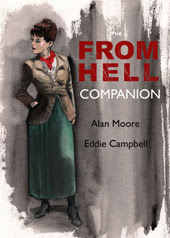


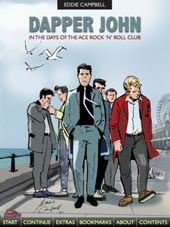
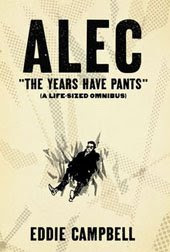
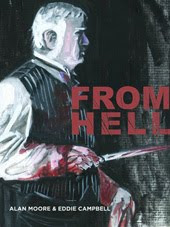
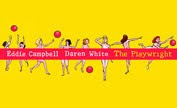
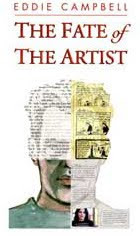
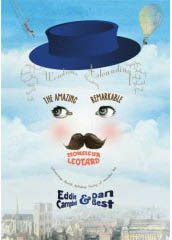





5 Comments:
It could be that the notoriety of the horror comics made the reprint project more commercially viable. I think it was the horror stuff rather than the SF, war or parody material that got Wertham and the comics code people on Gaines, and that "forbidden fruit" aura probably hung around those stories even into the mid-70s.
Eek! There could've been generations of writers, directors, etc. who would've been inspired by EC, instead doing romance stuff! Stephen King's Flowers in the Attic, George A Romero's Love Story etc. Intriguing.
à propos of nothing specific
Van Gogh at the Auver corral
A new biography of Vincent van Gogh is out, death was by gunfighting between French school boys
Steven Naifeh en Gregory White Smith 2011: Van Gogh: The Life
link in Dutch
http://www.nrc.nl/nieuws/2011/10/17/vincent-van-gogh-pleegde-geen-zelfmoord-hij-werd-neergeschoten/
Actually, I'd argue that the best American commercial comic books of the 1950s were those published by Dell: the Duck comics of Carl Barks; Little Lulu and Tubby by John Stanley, Irving Tripp, et. al.; the Pogo comic books of Walt Kelley; and on a lesser level the Tarzan comics of Jesse Marsh. EC had some excellent comics (mainly Mad and the Kurtzman war comics, also Johnny Craig's horror and suspense stories and Krigstein's experimentation). But overall I'd say Dell had the advantage.
And Dell had the largest part of the market too. From Beaty's critique of Hadju at my first link up there:
"Helen Meyer of Dell, on the other hand, testified a few hours later that they sold 25 million copies per month, or 32% of the total industry. So it is difficult to know what Hajdu means when he claims that Timely was the most successful publisher in comics at that point in history."
Post a Comment
Subscribe to Post Comments [Atom]
<< Home